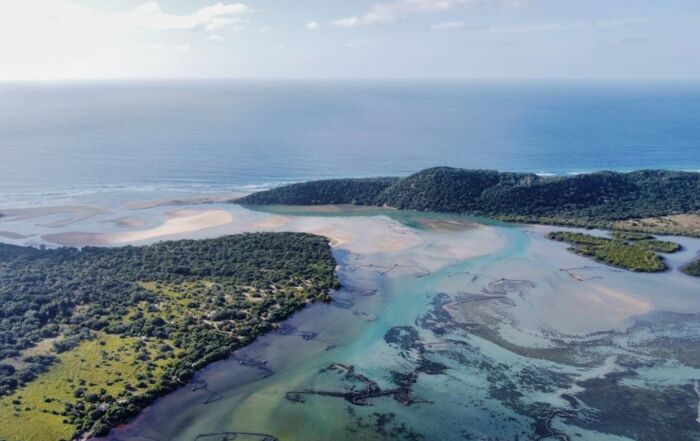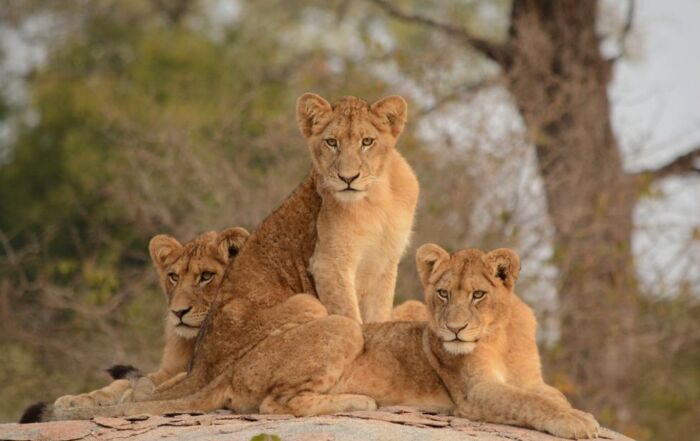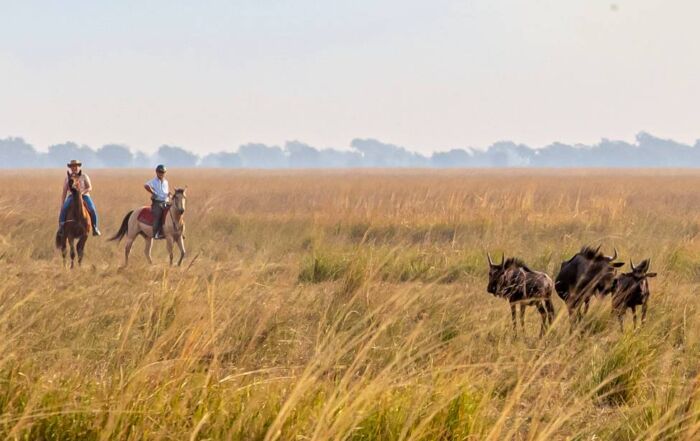Kosi Bay is on the northern end of iSimangaliso Wetland Park near Mozambique.
iSimangaliso Wetland Park Offers Miles of Adventure
The third largest of South Africa‘s conservation areas, iSimangaliso Wetland Park is a true “miracle and wonder”—the meaning of its name in Zulu. Spanning 1,250 square miles of coastline from the Mozambican border in the north past Lake Saint Lucia and the Umfolozi River in the south, the park encompasses a mind-boggling array of ecosystems, including Africa’s southernmost coral reefs, the tallest forested sand dunes in the world, sandy beaches, savannas, and wetlands.
Formerly known as St. Lucia Wetland Park, iSimangaliso Wetland Park comprises a number of important wetlands, landmarks, and smaller parks and reserves, including False Bay, Lake Eteza Nature Reserve, Maphelane Nature Reserve, uMkhuze Game Reserve, Sodwana Bay, and Tewate Wilderness Area.
The park’s abundant biodiversity and stunning natural beauty earned it a place on the UNESCO World Heritage Site list in 1999. iSimangaliso Wetland Park is enormous, and each area of it is unique. In this article, we highlight a few of our favorite spots within the park and what makes each stand out.
Lake St. Lucia
Lake St. Lucia is often considered the crown jewel of iSimangaliso Wetland Park. At 140 square miles, it is South Africa’s biggest estuarine lake—a place where fresh water and ocean water meet.
Lake St. Lucia boasts a plenitude of wildlife, including large numbers of hippos and crocodiles, a few bull sharks, and shorebirds such as giant kingfishers, spoonbills, flamingos, and a variety of herons. On shore, you might see monitor lizards, zebras, wildebeest, warthogs, impalas, reedbucks, and other antelope. It goes without saying that the natural surroundings are spectacular—botanists have identified over 2,180 flowering plants around the lake system.
No wonder the lake was named a Ramsar Wetland of International Importance in 1971. And thanks to re-introduction efforts, the eastern shores of the lake now have Cape buffalo and elephants, and there is a possibility of spotting a rhino or leopard too.
Boat cruises are perhaps the most popular way to see Lake St. Lucia. It’s a great way to spot some of the park’s crocs and hippos, as well as a variety of shorebirds, some songbirds, and a few raptors, particularly fish eagles.
On land, strolling the Estuary Boardwalk will introduce you to incredible sights and sounds. It is a must for birders—more than 400 species live around the lake, many displaying colorful plumage and singing enchanting melodies. The vegetated sand dunes between the lake and the ocean offer another fascinating route for those on foot.
Cover longer distances via the mountain bike trails that wind through the estuary. You can also take a bicycle tour that travels through sections of the park and the town of St. Lucia. Horseback riding along the beach or through the bush to see plains game is another good way to explore the area.
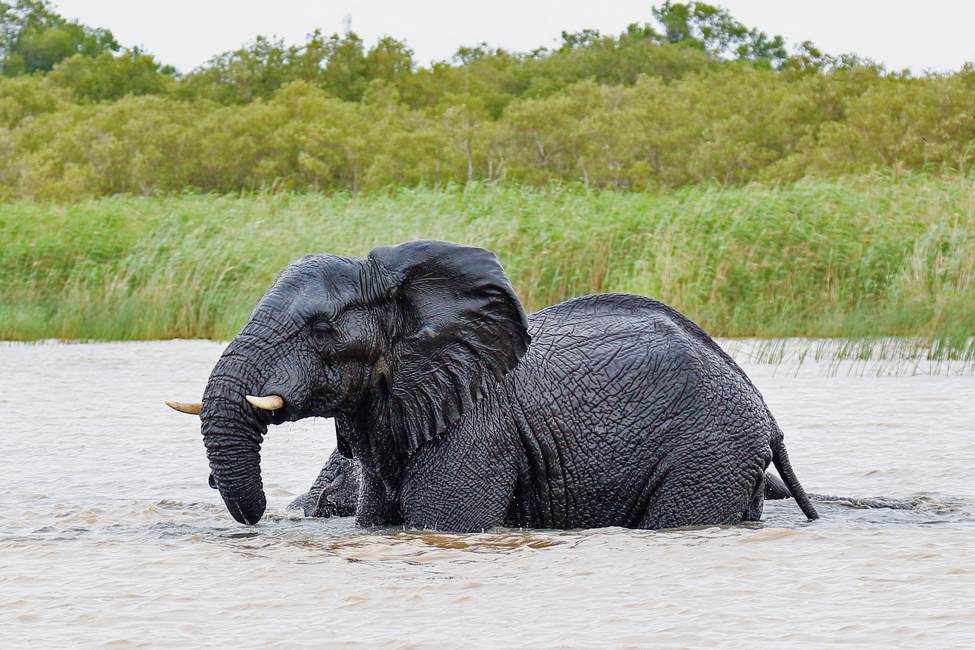
An African elephant wades in Lake St. Lucia estuary, South Africa. Photo by Bernard Gagnon.
False Bay Park
This small nature reserve protects the western shore of False Bay, a freshwater bay connected to Lake St. Lucia. The park is to the east of Lake St. Lucia near its northern end.
False Bay was named a Ramsar wetland site in 2015. It is home to many bird species, including the African broadbill, greater flamingo, little stint, pied avocet, pink-backed pelican, and great white pelican. Other wildlife include hippos, African clawless otters, Cape grysboks, steenboks, Cape genets, and both the marsh and Cape gray mongoose.
Sodwana Bay
Several miles up the coast from Lake Saint Lucia lies Sodwana Bay, the southernmost point where Africa’s coral reefs have formed. The bay boasts some of the most impressive coral variety globally, along with color-changing octopuses and squid.
Popular activities here include beach walks, snorkeling, sport fishing, kitesurfing, and scuba diving at depths from 12 to 40+ meters. With a temperature range of 68°F to 83°F, the water is never cold. Whale sharks are here year-round, but easiest to find in South Africa’s summer. Summer is also the time of year loggerhead and leatherback turtles come to the South African coast to lay eggs on the beaches. From November to February, guided evening walks allow the opportunity to witness the giant leatherback and loggerhead turtles laying their eggs. Humpback whales may be seen May through December.
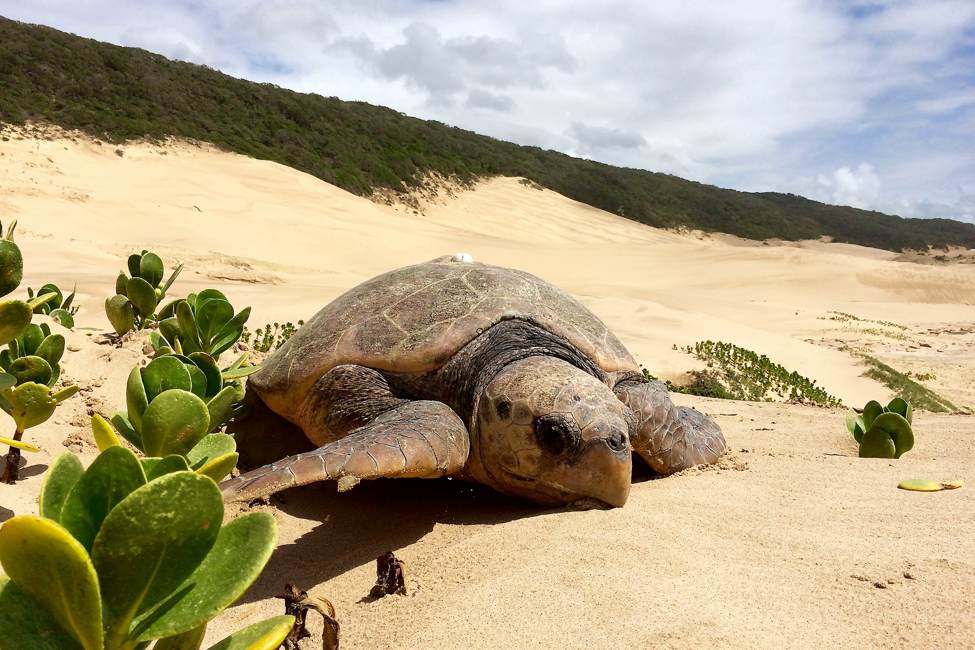
A leatherback turtle rests on the beach near Sodwana Bay in iSimangaliso Wetland Park. Photo by Jeroen Looyé.
uMkhuze Game Reserve
West of Sodwana Bay lies uMkhuze Game Reserve (also spelled Mkhuze or Mkuze). With a beautiful, mountainous backdrop provided by the Ubombo Mountains, uMkhuze’s vast scrubland and freshwater pans create a sanctuary of peace and calm. Its 150 square miles offer a great variety of rare plants and interesting wildlife. The reserve’s beauty lies in its contrasting landscapes: low-lying sand dunes, water pans, a river gorge home to marine fossils, a thick acacia forest, and a rare fig tree forest on the banks of the uMkhuze River.
Wildlife that may be spotted on a game drive here include the Big Five, blue wildebeest, African wild dogs, hyenas, giraffes, cheetahs, Burchell’s zebras, a variety of antelope and, of course, hippos and crocodiles.
uMkhuze Game Reserve is neighbored by Phinda Private Reserve, a favorite destination of Ujuzi travelers that shares many of uMkhuze’s characteristics. Because Phinda is a private reserve, it offers the option of nighttime game drives, when you might see galagos, porcupines, hyenas, hippos, African civets, genets, and bush pigs. You can even sleep out under the stars! Guided bushwalks are another highlight, and guests have the unique opportunity to accompany conservation scientists as they do field work involving elephants, rhinos, and pangolins.
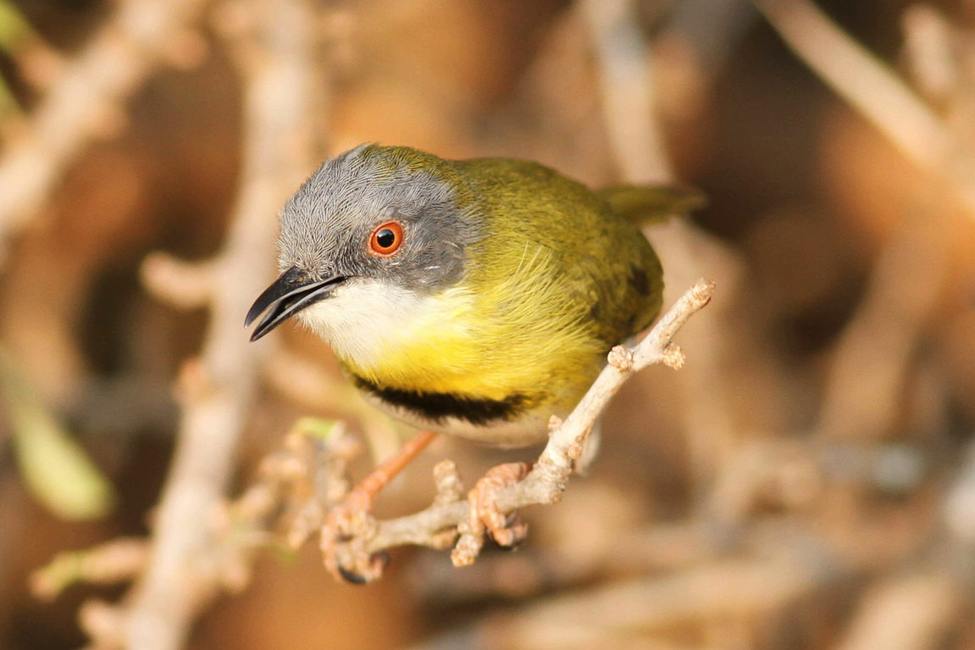
A male yellow-breasted apalis perches on a branch at uMkhuze Game Reserve. Photo by Derek Keats.
Lake Sibaya
A bit north of Sodwana Bay, Lake Sibaya is South Africa’s biggest freshwater lake. Isolated from the Indian Ocean by a narrow ridge of forested dunes, the clear lake is 30 square miles and has an average depth of 43 feet. With 279 bird species recorded at Lake Sibaya (also known as Lake Sibhayi), it is a birdwatcher’s paradise. It’s also home to a huge population of hippos, as well as its fair share of crocodiles.
Kosi Bay
Situated just one mile from Mozambique, Kosi Bay comprises four lakes that flow into the sea. In the clear waters, you can look out for an abundance of fish species, including bull sharks, whale sharks, and manta rays. On land and in the sky, look for a diversity of butterflies and birds, including many not seen elsewhere in South Africa. Explore the magnificent raffia forest filled with Kosi palms, which have some of the largest leaves of any plant, and listen for the abundant bird calls (more than 420 species have been recorded in this area). Perhaps you’ll even see a palm-nut vulture and a duiker or two.
Explore the waters by canoe or kayak to get up-close views of shorebirds and some of the fish that dart just below the water’s surface. Other popular activities include snorkeling, scuba diving, trail hikes, boat cruises, and turtle walks from November to February.
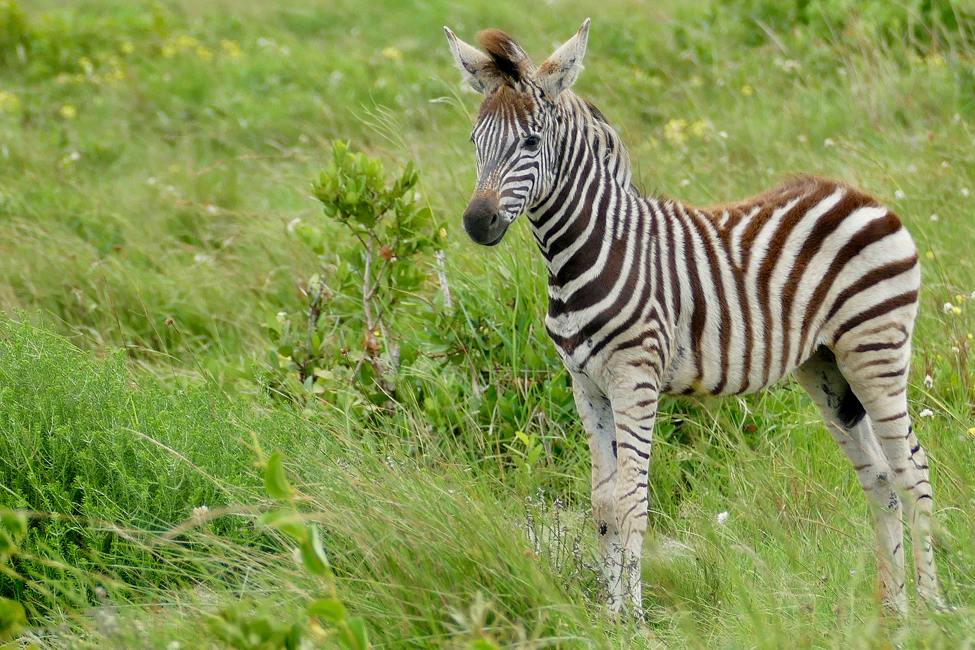
A Burchell’s zebra foal grazes on the Western Shores by Lake St. Lucia. Photo by Bernard Dupont.
Visiting iSimangaliso Wetland Park
With so much to see and do in iSimangaliso Wetland Park, you can easily spend weeks there and never get bored. You can also incorporate a shorter visit into a larger South African safari, as in this sample itinerary, which includes stays in Kosi Bay and Phinda Private Reserve. Contact Ujuzi today to explore your options for an iSimangaliso safari!
Sign up for the Ujuzi Newsletter!
From top travel tips to innovative safaris and conservation movement, get inspired to plan your next African safari!
By submitting this form, you are consenting to receive marketing emails from: . You can revoke your consent to receive emails at any time by using the SafeUnsubscribe® link, found at the bottom of every email. Emails are serviced by Constant Contact


